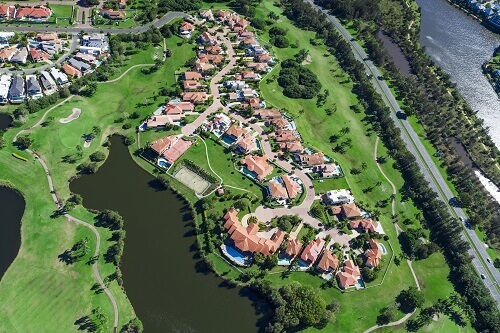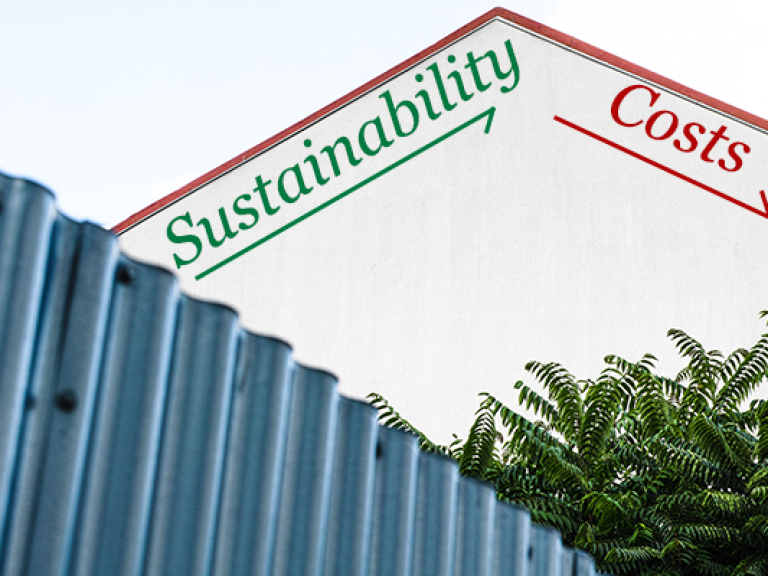
Buy Land for Capital Growth
Property: asset not attachment
A lot of people think McDonald's is a fast food company but it’s not – it’s a property company. What adds to their balance sheet is billions of dollars in property – not the hamburgers! The book Behind the Arches tells the story of how McDonald's almost imploded early in its life because it didn’t own its own properties. Ray Kroc brought in a finance guy; they bought property; they got their tenants to pay rent and they duplicated – acquiring more property, renting it out, using the growth, and acquiring more property and so on. We all know that McDonald's is still thriving today.
I’ve sold the property to McDonald's myself. They have a fantastic working formula for selecting sites: local population needs to be X amount, traffic flow needs to be Y amount. They build premises on that site, put tenants in and brand it: a sure-fire recipe for income and capital growth.
When I buy property, I buy for three things:
• Capital growth – I do my homework on the value of the land and how that land is likely to appreciate over time.
• Reliable cash flow – I do my homework on prospective rental demand and available tax deductions so that I can offset my costs.
• Duplication – using capital growth and cash flow, I duplicate, duplicate, duplicate because the only way to harness the power of exponential growth is to own multiple properties.
It doesn’t matter that my building is basic, or unattractive, or that I personally don’t love it because I’m not living in it.
Two key points
• Land appreciates and buildings depreciate. This ought to be taught in schools but it isn’t so take it on board.
• Established capital benchmark (ECB). This is a very useful concept. If you want to get a ‘bargain’, that is, to find a property which is potentially under-priced, considering its intrinsic or potential value, I recommend you look at the worst house in the best street. Why? It’s about the land, not the building.
The building may eventually be a knockdown but the land will keep appreciating. A good street will have other homes which are worth much more and this sets what’s called the established capital benchmark (ECB) for the area. I want to be buying for $400,000 in a suburb that has an ECB of $750,000 or more, that is, other homes are worth that amount.
Location = capital growth
How many times have we heard it: ‘location, location, location’? But what does it mean? Not necessarily a neighborhood that happens to be popular or ‘sexy.’ Locations are subject to fashions and fads just like anything else. I want to know that my property will continue to increase in value and that means an area of population growth and employment growth.

According to the Urban Land Institute, there are six main reasons why families with children choose to live in a particular area:
• Proximity to schools
• Security for the family
• Adequate public transport
• Proximity to shops
• Availability of (or proximity to) employment
• Recreational facilities and general living environment.
That’s the kind of location that sustains demand – both for rental (protecting the reliability of your cash flow) and for purchase (enhancing your prospects for capital growth over time).
Other statistics are also worth watching. The following are available from the Australian Bureau of Statistics website, for example:
• Population per household – since I’ve recommended investing in detached housing rather than units (because of the land content), you probably need to look at an area where the average population per household is over +2 (over 2). (The national average is currently about 2.6.)
• The percentage of owner-occupiers and renters – people prefer to buy homes where the percentage of owner-occupiers is relatively high, so in order to boost the eventual resale potential of your property, invest in an area with no more than 30 percent rentals.
Checklist
□ Invest in a house or duplex with at least 30 percent land content.
□ Invest where population and jobs are growing.
□ Invest within 30 minutes’ drive of a capital city (or major infrastructure center).
□ Invest in a suburb with an established capital benchmark twice your entry price.
□ Invest in an area with an average population of more than 2.5 people per household.
□ Invest in an area with at least 70 percent owner-occupiers.
□ Invest in an area where vacancy rates are no more than 3 percent
>>> Coming Next: Optimise Your Income
Please note: This is an extract from the Success From Scratch – it may not contain the exercises from the full version of the book/audio set, for full version please contact us or follow our blog for more.
Thank you,
The team@Custodian








